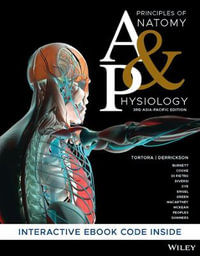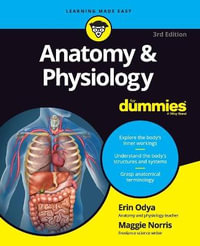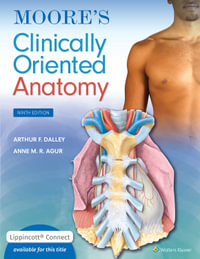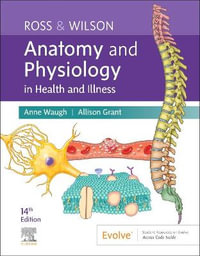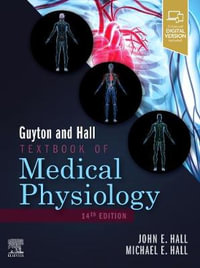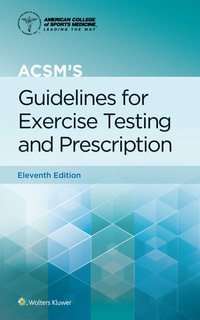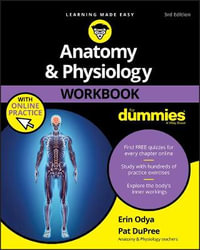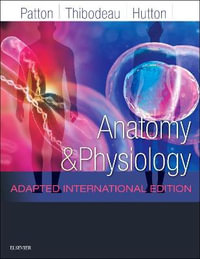| Preface | p. vii |
| Sources and Credits | p. xi |
| Theoretical Approaches in Physiology | p. 1 |
| Introduction | p. 1 |
| A Wee Bit of History to Motivate Things | p. 1 |
| Excitable Cells | p. 1 |
| Little Nervous Systems | p. 4 |
| Some Other Examples | p. 5 |
| Impact & Lessons | p. 6 |
| Successful Collaborations | p. 7 |
| Introduction to Dynamics in Nonlinear Difference and Differential Equations | p. 9 |
| Main Concepts in Nonlinear Dynamics | p. 10 |
| Difference Equations in One Dimension | p. 12 |
| Stability and Bifurcations | p. 13 |
| Ordinary Differential Equations | p. 19 |
| One-Dimensional Nonlinear Differential Equations | p. 20 |
| Two-Dimensional Differential Equations | p. 22 |
| Three-Dimensional Ordinary Differential Equations | p. 26 |
| Limit Cycles and the Hopf Bifurcation | p. 27 |
| Time-Delay Differential Equations | p. 29 |
| The Poincare Map | p. 31 |
| Conclusions | p. 34 |
| Computer Exercises: Iterating Finite-Difference Equations | p. 34 |
| Computer Exercises: Geometry of Fixed Points in Two-Dimensional Maps | p. 37 |
| Bifurcations Involving Fixed Points and Limit Cycles in Biological Systems | p. 41 |
| Introduction | p. 41 |
| Saddle-Node Bifurcation of Fixed Points | p. 42 |
| Bistability in a Neural System | p. 42 |
| Saddle-Node Bifurcation of Fixed Points in a One-Dimensional System | p. 44 |
| Saddle-Node Bifurcation of Fixed Points in a Two-Dimensional System | p. 46 |
| Bistability in a Neural System (Revisited) | p. 48 |
| Bistability in Visual Perception | p. 48 |
| Pitchfork Bifurcation of Fixed Points | p. 50 |
| Pitchfork Bifurcation of Fixed Points in a One-Dimensional System | p. 50 |
| Pitchfork Bifurcation of Fixed Points in a Two-Dimensional System | p. 52 |
| The Cusp Catastrophe | p. 52 |
| Transcritical Bifurcation of Fixed Points | p. 53 |
| Transcritical Bifurcation of Fixed Points in a One-Dimensional System | p. 53 |
| Transcritical Bifurcation of Fixed Points in a Two-Dimensional System | p. 55 |
| Saddle-Node Bifurcation of Limit Cycles | p. 57 |
| Annihilation and Single-Pulse Triggering | p. 57 |
| Topology of Annihilation and Single-Pulse Triggering | p. 58 |
| Saddle-Node Bifurcation of Limit Cycles | p. 60 |
| Saddle-Node Bifurcation in the Hodgkin-Huxley Equations | p. 61 |
| Hysteresis and Hard Oscillators | p. 63 |
| Floquet Multipliers at the Saddle-Node Bifurcation | p. 64 |
| Bistability of Periodic Orbits | p. 66 |
| Period-Doubling Bifurcation of Limit Cycles | p. 69 |
| Physiological Examples of Period-Doubling Bifurcations | p. 69 |
| Theory of Period-Doubling Bifurcations of Limit Cycles | p. 70 |
| Floquet Multipliers at the Period-Doubling Bifurcation | p. 72 |
| Torus Bifurcation | p. 74 |
| Homoclinic Bifurcation | p. 77 |
| Conclusions | p. 79 |
| Problems | p. 80 |
| Computer Exercises: Numerical Analysis of Bifurcations Involving Fixed Points | p. 82 |
| Additional Computer Exercises | p. 85 |
| Dynamics of Excitable Cells | p. 87 |
| Introduction | p. 87 |
| The Giant Axon of the Squid | p. 87 |
| Anatomy of the Giant Axon of the Squid | p. 87 |
| Measurement of the Transmembrane Potential | p. 88 |
| Basic Electrophysiology | p. 88 |
| Ionic Basis of the Action Potential | p. 88 |
| Single-Channel Recording | p. 89 |
| The Nernst Potential | p. 91 |
| A Linear Membrane | p. 92 |
| Voltage-Clamping | p. 93 |
| The Voltage-Clamp Technique | p. 93 |
| A Voltage-Clamp Experiment | p. 94 |
| Separation of the Various Ionic Currents | p. 94 |
| The Hodgkin-Huxley Formalism | p. 95 |
| Single-Channel Recording of the Potassium Current | p. 95 |
| Kinetics of the Potassium Current I[subscript K] | p. 96 |
| Single-Channel Recording of the Sodium Current | p. 98 |
| Kinetics of the Sodium Current I[subscript Na] | p. 99 |
| The Hodgkin-Huxley Equations | p. 102 |
| The FitzHugh-Nagumo Equations | p. 104 |
| Conclusions | p. 105 |
| Computer Exercises: A Numerical Study on the Hodgkin-Huxley Equations | p. 106 |
| Computer Exercises: A Numerical Study on the FitzHugh-Nagumo Equations | p. 115 |
| Resetting and Entraining Biological Rhythms | p. 123 |
| Introduction | p. 123 |
| Mathematical Background | p. 125 |
| W-Isochrons and the Perturbation of Biological Oscillations by a Single Stimulus | p. 125 |
| Phase Locking of Limit Cycles by Periodic Stimulation | p. 128 |
| The Poincare Oscillator | p. 130 |
| A Simple Conduction Model | p. 136 |
| Resetting and Entrainment of Cardiac Oscillations | p. 140 |
| Conclusions | p. 142 |
| Acknowledgments | p. 144 |
| Problems | p. 145 |
| Computer Exercises: Resetting Curves for the Poincare Oscillator | p. 146 |
| Effects of Noise on Nonlinear Dynamics | p. 149 |
| Introduction | p. 149 |
| Different Kinds of Noise | p. 151 |
| The Langevin Equation | p. 152 |
| Pupil Light Reflex: Deterministic Dynamics | p. 155 |
| Pupil Light Reflex: Stochastic Dynamics | p. 159 |
| Postponement of the Hopf Bifurcation | p. 159 |
| Stochastic Phase Locking | p. 162 |
| The Phenomenology of Skipping | p. 165 |
| Mathematical Models of Skipping | p. 167 |
| Stochastic Resonance | p. 172 |
| Noise May Alter the Shape of Tuning Curves | p. 175 |
| Thermoreceptors | p. 178 |
| Autonomous Stochastic Resonance | p. 180 |
| Conclusions | p. 182 |
| Computer Exercises: Langevin Equation | p. 184 |
| Computer Exercises: Stochastic Resonance | p. 186 |
| Reentry in Excitable Media | p. 191 |
| Introduction | p. 191 |
| Excitable Cardiac Cell | p. 192 |
| Threshold | p. 192 |
| Action Potential Duration | p. 194 |
| Propagation of Excitation | p. 196 |
| Structure of the Tissue | p. 196 |
| Cellular Automata | p. 198 |
| Wiener and Rosenblueth Model | p. 198 |
| Improvements | p. 202 |
| Iterative and Delay Models | p. 203 |
| Zykov Model on a Ring | p. 204 |
| Delay Equation | p. 204 |
| Circulation on the Ring with Variation of the Action Potential Duration | p. 205 |
| Delay Equation with Dispersion and Restitution | p. 206 |
| Partial Differential Equation Representation of the Circulation | p. 212 |
| Ionic Model | p. 212 |
| One-Dimensional Ring | p. 215 |
| Reentry in Two Dimensions | p. 216 |
| Reentry Around an Obstacle | p. 216 |
| Simplifying Complex Tissue Structure | p. 218 |
| Spiral Breakup | p. 219 |
| Conclusions | p. 223 |
| Computer Exercises: Reentry using Cellular Automata | p. 224 |
| Cell Replication and Control | p. 233 |
| Introduction | p. 233 |
| Regulation of Hematopoiesis | p. 235 |
| Periodic Hematological Disorders | p. 237 |
| Uncovering Oscillations | p. 237 |
| Cyclical Neutropenia | p. 237 |
| Other Periodic Hematological Disorders Associated with Bone Marrow Defects | p. 242 |
| Periodic Hematological Disorders of Peripheral Origin | p. 244 |
| Peripheral Control of Neutrophil Production and Cyclical Neutropenia | p. 244 |
| Hypotheses for the Origin of Cyclical Neutropenia | p. 244 |
| Cyclical Neutropenia Is Not Due to Peripheral Destabilization | p. 246 |
| Stem Cell Dynamics and Cyclical Neutropenia | p. 256 |
| Understanding Effects of Granulocyte Colony Stimulating Factor in Cyclical Neutropenia | p. 259 |
| Conclusions | p. 263 |
| Computer Exercises: Delay Differential Equations, Erythrocyte Production and Control | p. 263 |
| Pupil Light Reflex: Delays and Oscillations | p. 271 |
| Introduction | p. 271 |
| Where Do Time Delays Come From? | p. 271 |
| Pupil Size | p. 273 |
| Pupil Light Reflex | p. 275 |
| Mathematical Model | p. 276 |
| Stability Analysis | p. 279 |
| Pupil Cycling | p. 282 |
| Localization of the Nonlinearities | p. 288 |
| Retinal Ganglion Cell Models | p. 290 |
| Iris Musculature Effects | p. 290 |
| Spontaneous Pupil Oscillations? | p. 291 |
| Pupillary Noise | p. 292 |
| Noisy Pupillometers | p. 293 |
| Parameter Estimation | p. 295 |
| Conclusions | p. 296 |
| Problems | p. 296 |
| Computer Exercises: Pupil-Size Effect and Signal Recovery | p. 297 |
| Computer Exercises: Noise and the Pupil Light Reflex | p. 299 |
| Data Analysis and Mathematical Modeling of Human Tremor | p. 303 |
| Introduction | p. 303 |
| Background on Tremor | p. 304 |
| Definition, Classification, and Measurement of Tremor | p. 304 |
| Physiology of Tremor | p. 308 |
| Characteristics of Tremor in Patients with Parkinson's Disease | p. 310 |
| Conventional Methods Used to Analyze Tremor | p. 312 |
| Initial Attempts to Model Human Tremor | p. 314 |
| Linear Time Series Analysis Concepts | p. 316 |
| Displacement vs. Velocity vs. Acceleration | p. 316 |
| Amplitude | p. 320 |
| Frequency Estimation | p. 322 |
| Closeness to a Sinusoidal Oscillation | p. 323 |
| Amplitude Fluctuations | p. 323 |
| Comparison Between Two Time Series | p. 324 |
| Deviations from Linear Stochastic Processes | p. 326 |
| Deviations from a Gaussian Distribution | p. 326 |
| Morphology | p. 327 |
| Deviations from Stochasticity, Linearity, and Stationarity | p. 329 |
| Time-Reversal Invariance | p. 330 |
| Asymmetric Decay of the Autocorrelation Function | p. 330 |
| Mathematical Models of Parkinsonian Tremor and Its Control | p. 332 |
| The Van der Pol Equation | p. 332 |
| A Hopfield-Type Neural Network Model | p. 333 |
| Dynamical Control of Parkinsonian Tremor by Deep Brain Stimulation | p. 335 |
| Conclusions | p. 337 |
| Computer Exercises: Human Tremor Data Analysis | p. 339 |
| Exercises: Displacement Versus Velocity Versus Acceleration | p. 342 |
| Exercises: Distinguishing Different Types of Tremor | p. 347 |
| Computer Exercises: Neural Network Modeling of Human Tremor | p. 350 |
| An Introduction to XPP | p. 359 |
| ODE Files | p. 359 |
| Starting and Quitting XPP | p. 361 |
| Time Series | p. 361 |
| Numerics | p. 361 |
| Graphic Tricks | p. 362 |
| Axis | p. 362 |
| Multiplotting | p. 362 |
| Erasing | p. 362 |
| Printing the Figures | p. 363 |
| Examining the Numbers | p. 363 |
| Changing the Initial Condition | p. 363 |
| Finding the Fixed Points and Their Stability | p. 364 |
| Drawing Nullclines and Direction Field | p. 364 |
| Changing the Parameters | p. 364 |
| Auto | p. 365 |
| Bifurcation Diagram | p. 365 |
| Scrolling Through the Points on the Bifurcation Diagram | p. 365 |
| Saving Auto Diagrams | p. 366 |
| An Introduction to Matlab | p. 367 |
| Starting and Quitting Matlab | p. 367 |
| Vectors and Matrices | p. 368 |
| Creating Matrices and Vectors | p. 368 |
| Suppressing Output to the Screen (the Semicolon!) | p. 369 |
| Operations on Matrices | p. 369 |
| Programs (M-Files) | p. 370 |
| Script Files | p. 370 |
| Function Files | p. 370 |
| The Help Command | p. 372 |
| Loops | p. 372 |
| Plotting | p. 373 |
| Examples | p. 373 |
| Clearing Figures and Opening New Figures | p. 375 |
| Symbols and Colors for Lines and Points | p. 375 |
| Loading Data | p. 375 |
| Examples | p. 376 |
| Saving Your Work | p. 376 |
| Time Series Analysis | p. 377 |
| The Distribution of Data Points | p. 377 |
| Linear Processes | p. 379 |
| Fourier Analysis | p. 379 |
| Bibliography | p. 384 |
| Index | p. 427 |
| Table of Contents provided by Ingram. All Rights Reserved. |


